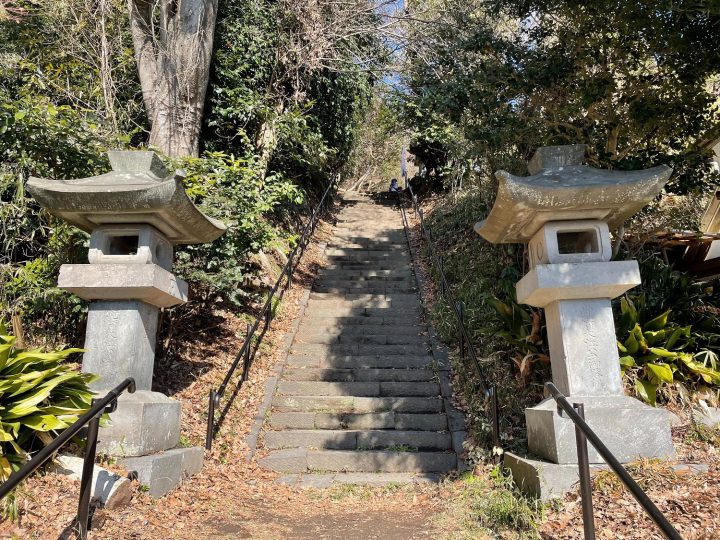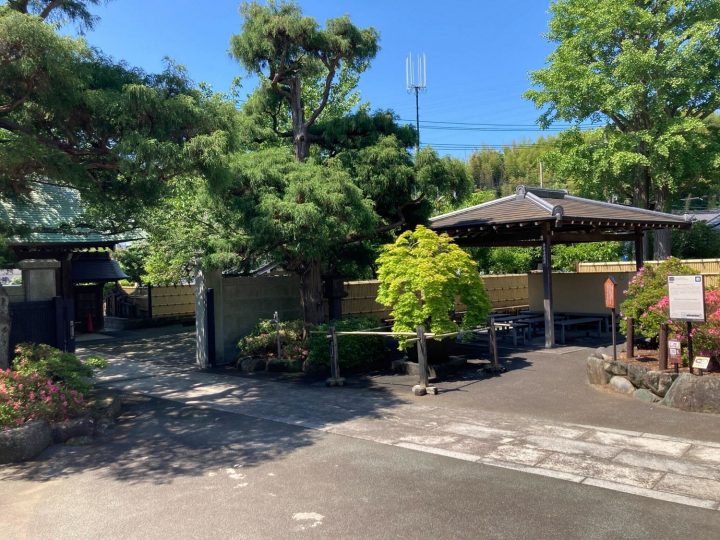Touring places associated with the Kamakura Shogun
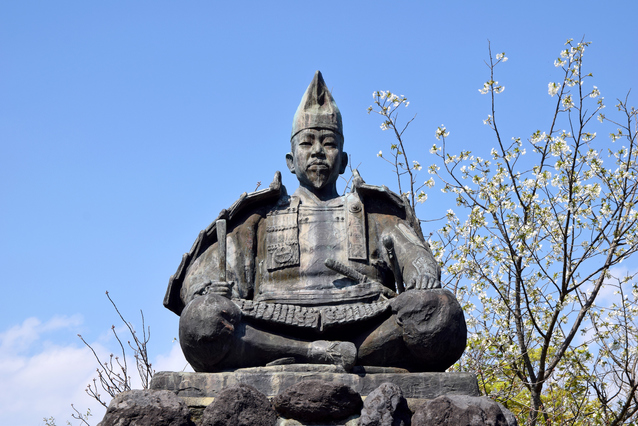
Kanagawa Prefecture has many famous places and historical sites.
The main attractions in Kanagawa Prefecture include Yokohama, a symbol of modernization and enlightenment, which opened its ports early in Japan's isolation from the rest of the world at the end of the Edo period, and was the first to build railways thereafter. In the central part of the prefecture, there is the 1,000-year-old ancient capital of Kamakura, the birthplace of samurai government. In the west, there is Odawara, the home base of the Hojo clan, who were known as the rulers of the Kanto region during the Sengoku period, and Hakone, a famous hot spring resort with a long history dating back to the Nara period. There are many other famous places and historical sites in Kanagawa Prefecture. I was wondering where to start introducing the attractions of the prefecture, but since the NHK Taiga drama for 2022 is "The 13 Lords of the Kamakura," I would like to introduce the tourist spots in Kamakura related to them.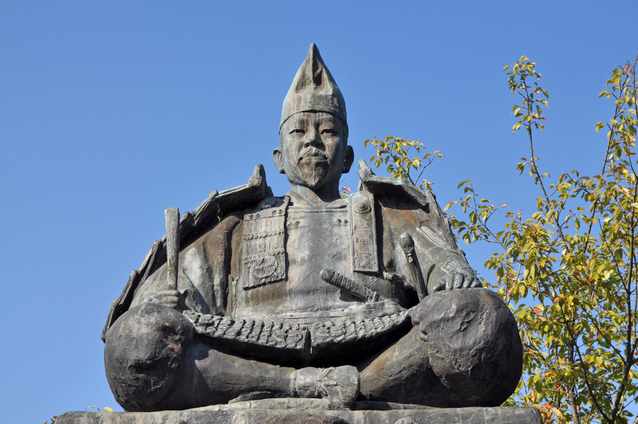
By the way, as many of you may know, "Kamakuradono" refers to the shogun of the Kamakura shogunate.
After defeating the Taira army at the Battle of Fujigawa in 1180, Minamoto no Yoritomo established his base in Kamakura, a place associated with the Minamoto clan. He moved Tsurugaoka Hachimangu Shrine to its current location, established his own residence, the Okura Imperial Palace, and the Samurai-dokoro, which oversaw military and police functions, and came to be known as the "Kamakura Lord."
Spot 1 Yui Wakamiya Shrine (Motoyawata)
The real relationship between the Genji and Kamakura began with the construction of this Hachiman. In 1063, Minamoto no Yoriyoshi, the ancestor of the Kawachi Genji, moved Iwashimizu Hachiman in Kyoto to this location as a token of gratitude for his victory in the Battle of Zenkunen. This is Yui Wakamiya. It is said that at the time, the area in front of this Hachiman was the coastline, but it is now a residential area and stands quietly.
⫯ 1-7 Zaimokuza, Kamakura City, Kanagawa Prefecture
Spot 2: Tsurugaoka Hachimangu Shrine (Image: TokyoDayTrip Kanagawa Travel Info)
(Image: TokyoDayTrip Kanagawa Travel Info)
In 1180, Minamoto no Yoritomo, who was based in Kamakura, immediately made a pilgrimage to Yui Hachiman and moved the shrine inland to Kitayama in Kobayashi-go. This became the current Tsurugaoka Hachimangu Shrine. Tsurugaoka Hachimangu Shrine is a place revered not only by the Minamoto clan but also as the guardian deity of the warriors of the Kanto region. It is also the place where Shizuka Gozen danced in memory of Minamoto no Yoshitsune, and where the third shogun, Minamoto no Sanetomo, was attacked by Kugyo, the son of the second shogun, Minamoto no Yoriie, ending the Minamoto shogun line, making it a spot deeply connected to the history of Kamakura.
⫯ 2-1-31 Yukinoshita, Kamakura City, Kanagawa Prefecture
*Speaking of Shizuka Gozen...please also check out the performance "Shizuka, Love and Death" that was live streamed on August 7, 2021!
Related page: here
Video: Here
Spot 3 Wakamiya Oji (Dankazura)
Wakamiya Oji runs in a straight line from Tsurugaoka Hachimangu Shrine to Yuigahama Beach. It was constructed in 1182 by Minamoto no Yoritomo, who used Suzaku Oji in Kyoto as a model, and it is said that Yoritomo intended to use Wakamiya Oji as the center of the construction of Kamakura. The most distinctive feature of Wakamiya Oji is the walkway called Dankazu, which is raised by one stone step. It is said that it was constructed as a prayer for the safe delivery of Hojo Masako, Yoritomo's wife who was pregnant at the time, or that it was constructed to improve convenience as soil and water would flow in from rain and other events, making it difficult to walk. At the time, it was a large-scale path that stretched for about 1,300 meters from the head shrine of Tsurugaoka Hachimangu Shrine to the first torii gate. (Only about 480 meters remain today.)
⫯ Near Onarimachi 4, Kamakura City, Kanagawa Prefecture
Spot 4: Okura Imperial Palace (Okura Shogunate)
When Minamoto no Yoritomo entered Kamakura, he established his residence in Okura and conducted government affairs from there. As a result, this area would later come to be known as the Okura Imperial Palace (Okura Shogunate). Yoritomo's ancestor, Minamoto no Yoshiie, had once established his residence here, which is said to be the reason why Yoritomo built his Imperial Palace here. A samurai office was also established here, and Wada Yoshimori, one of the Thirteen, became its betto (chief official), and rule began centered around this area. The Imperial Palace was surrounded by the mansions of powerful vassals, including Hatakeyama Shigetada, Miura Yoshimura (son of Miura Yoshizumi, one of the Thirteen), and Wada Yoshimori, who were in charge of defense.
⫯ Yukinoshita 3-chome, Kamakura City, Kanagawa Prefecture
Spot 5Hokke-do ruins (Tomb of Minamoto no Yoritomo)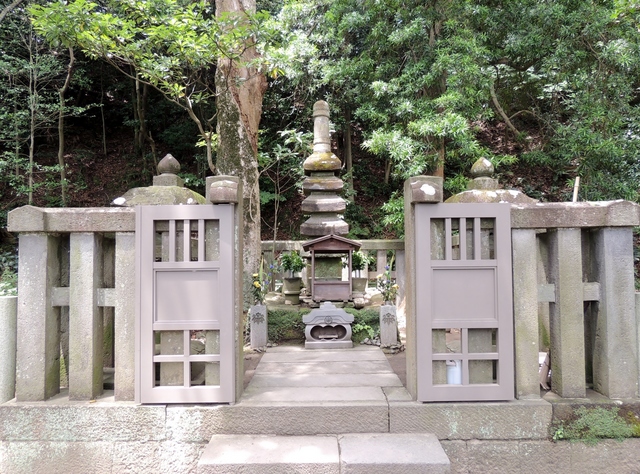
Minamoto no Yoritomo is said to have died at the age of 53 in January 1199 at the age of 53 after participating in the inauguration ceremony of a bridge built over the Sagami River by his vassal Inage Shigenari as a memorial for his late wife, and fell off his horse at Inamuragasaki on the way back. The cause of his death is not recorded in the Azuma Kagami, and the details are a mystery. The current grave marker was erected by Shimazu Shigehide during the Edo period. The Hokkedo ruins are designated as a historic site, and in addition to Yoritomo's grave, the grave of Hojo Yoshitoki, one of the Thirteen, is also located in the same area.
⫯ Nishimikado 2-chome, Kamakura City, Kanagawa
In addition to the places introduced above, there are many other places in Kanagawa Prefecture that are associated with Minamoto no Yoritomo, so we will introduce them again next time.
*Please note that there are various theories regarding the contents of this column.

